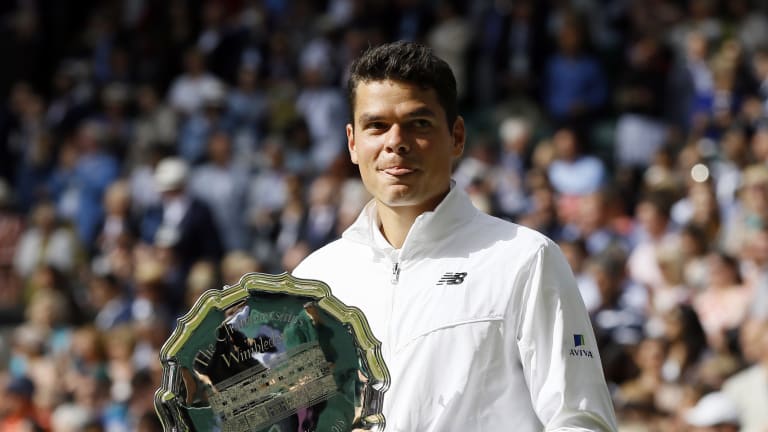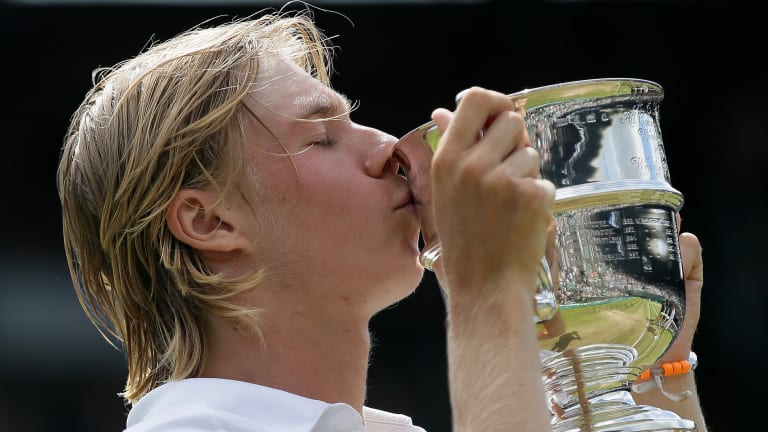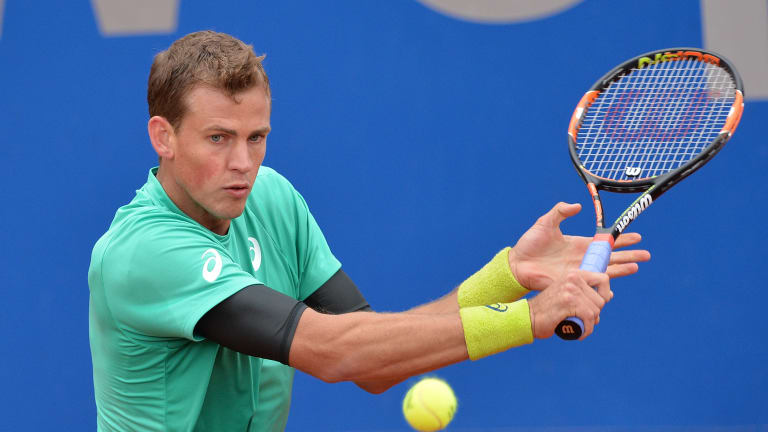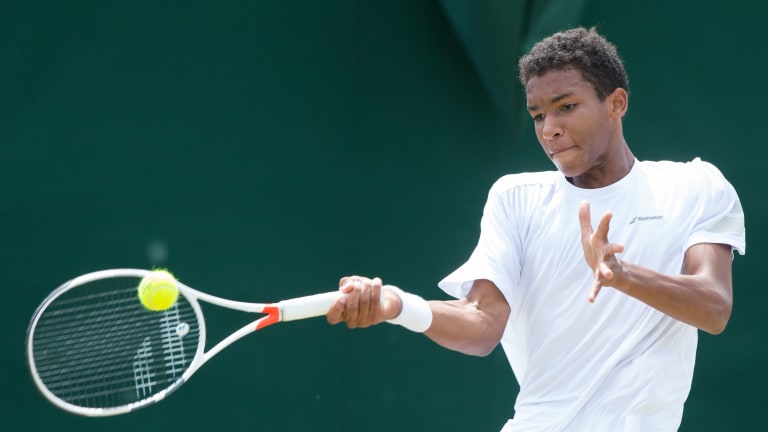Earlier this month, Milos Raonic became the first Canadian male to reach a Grand Slam final, but the northern nation was on the rise long before his breakthrough, and the future is looking vibrant. On Monday night, as a wild-card entry into Toronto, 17-year-old Denis Shapovalov upset No. 11 seed Nick Kyrgios, 7-6 (2), 3-6, 6-3, for his first-ever ATP win.
Canadian tennis' future shines bright
By Jul 26, 2016Style Points
Emma Raducanu carries BJK Cup momentum—and Team GB's lucky bracelet—into Stuttgart quarterfinals
By Apr 18, 2024ATP Bucharest, Romania
Joao Fonseca adjusts to heavier conditions in Bucharest for second ATP quarterfinal of 2024
By Apr 18, 2024ATP Barcelona, Spain
Casper Ruud beats Jordan Thompson for tour-leading 26th win, reaches Barcelona quarterfinals
By Apr 18, 2024WTA Stuttgart, Germany
Iga Swiatek slides through clay-court opener, defeats Elise Mertens in Stuttgart
By Apr 18, 2024WTA Stuttgart, Germany
Elena Rybakina, Marketa Vondrousova into Stuttgart quarters, Ons Jabeur out
By Apr 18, 2024ATP Munich, Germany
Holger Rune makes it through rain, snow, hail, Galán in Munich return
By Apr 18, 2024Stat of the Day
Casper Ruud has now won more matches than anyone this year after latest win in Barcelona
By Apr 18, 2024Style Points
As inseams get higher, Aryna Sabalenka, Stefanos Tsitsipas lead the Great Shorts Debate 🩳
By Apr 18, 2024ATP Barcelona, Spain
Cameron Norrie clinches 200th match win by halting Roberto Bautista Agut in Barcelona
By Apr 18, 2024Canadian tennis' future shines bright
The summer has been good to Canadian stars, as rising teens try t
Published Jul 26, 2016
Advertising
Advertising

Canadian tennis' future shines bright
© Copyright 2016 The Associated Press. All rights reserved. This material may not be published, broadcast, rewritten or redistribu
Advertising

Canadian tennis' future shines bright
© AP
Advertising

Canadian tennis' future shines bright
© Angelika Warmuth/picture-alliance/dpa/AP Images
Advertising
Advertising

Canadian tennis' future shines bright
© AP